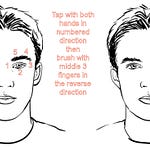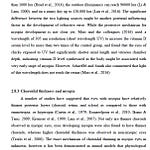This post was by Jacqueline at deeprootsathome.com from the original commentary by Dr. Mercola. I abridged it for clarity.
Wikipedia tells a bit of truth: “Methylene blue was first prepared in 1876, by Heinrich Caro. It is on the World Health Organization's List of Essential Medicines.” However, they proceed to tell lie after lie. I bolded a few in the following: “As a medication, it is mainly used to treat methemoglobinemia… [It] is typically given by injection into a vein. Common side effects include headache and vomiting…”
They do not mention that besides inactivating HIV-1, Hepatitis A and C, and the Ebola and Zika viruses, methylene blue is proven to be neuroprotective and helps improve brain function for people with Alzheimer’s, Parkinson’s, bipolar, depression, and more.
Existing ‘approved’ drugs for dementia don’t work, or they would be curing people, and the disease would disappear.
Methylene blue is the parent molecule for hydroxychloroquine, the off-patent drug commonly used to treat not only malaria but also Covid. Before antibiotics, it was widely used to treat urinary tract infections at the low doses described below. It’s also used as an antiviral agent in blood transfusions.
MB is used in hospitals worldwide to treat metabolic poisons that interfere with oxygen transport. If you’re admitted for carbon monoxide or cyanide poisoning, you’ll receive methylene blue intravenously. It’s the only known antidote.
Studies prove that MB is an effective antidepressant. You likely don’t know about it because this affordable substance would put the mental health industry out of business. And it doesn’t have the nasty side effects of Paxil or other antidepressants.
It helps mitochondrial respiration, improves brain energy metabolism, prevents neurodegeneration, and improves cognitive performance. Francisco Gonzalez-Lima, Ph.D., states, “Our group was the first to map the effects of methylene blue in the brain of humans and show its effects on improving brain metabolism, blood flow, and memory function” (see the interview in the first reference).
Low doses of MB are a “nootropic.” These substances enhance learning and memory and protect the brain while increasing natural cognitive processes. Nootropics are nontoxic and do not stimulate or depress the brain.
If you want to care for your family outside the present medical paradigm, have MB in your medicine toolkit.
Methylene blue improves these neurological diseases and more
Bipolar Disorder
MB in the Treatment of Neuropsychiatric Disorders. Conclusion: “Use of methylene blue in bipolar disorder led to a better stabilization and a reduction in residual symptoms of the illness.” Other studies are HERE and here: MB May Help Bipolar Depression.
Depression
A Controlled Trial of MB in Severe Depressive Illness. Conclusion: “Methylene blue at a dose of 15 mg/day appears to be a potent antidepressant..”
The Prophylactic Effect of MB in Manic-Depressive Psychosis. Conclusion: “During the year the patients were treated with methylene blue at 300 mg/day, they were significantly less depressed than during the year on 15 mg/day.”
The Journal of Neurotrauma reports that methylene blue has an antidepressant effect in mice with traumatic brain injury.
Alzheimer’s, dementia, Parkinson’s, and Huntington’s disease
MB and Alzheimer’s disease. Conclusion: “MB is known to reduce the formation of amyloid plaques and neurofibrillary tangles and to repair impairments in mitochondrial function and cellular metabolism. It also shows promise in treating Parkinson’s and Huntington’s diseases...” (source)
MB boosts memory
Neurometabolic Mechanisms for Memory Enhancement and Neuroprotection of MB. Conclusion: “..Methylene blue is neuroprotective… a safe intervention for the treatment of acute and chronic conditions with neurodegeneration and memory impairment.”
Functional MR Imaging of the Effects of MB in the Human Brain. Conclusion: “A single oral dose of MB improved memory retrieval by 7% and increased MRI-based responses in areas of the brain that control short-term memory and attention.”
More supporting studies are here, here, here, and here.
MB Increases mitochondrial energy production
Methylene blue assists brain cell respiration by increasing oxygen and donating electrons to the electron transport chain within mitochondria. This same process is used to create ATP within mitochondria. So MB contributes to this energy-production process. Increasing cellular energy effects mood and memory.
MB increases acetylcholine for better neuroplasticity
MB inhibits problematic acetylcholinesterase activity; the outcome is increased levels of acetylcholine. Acetylcholine’s function in the brain is critical for encoding new memories, reasoning, concentration, cognition, and the growth of new synapses (neuroplasticity). Lack of acetylcholine can result in diseases like ADD, ADHD, and Alzheimer’s. MB improves serotonin and norepinephrine, affecting anxiety, depression, and memory.
MB is neuroprotective
Methylene blue is a potent antioxidant. When damaging reactive oxygen species are produced inside mitochondria, the first free radical that is formed inside a cell is superoxide. MB binds to superoxide and reduces it to water. It stops the oxidative cascade at its very beginning before it does damage.
Dosing and quality
With MB, less is sometimes more. Very low doses (0.5 mg/kg of body weight/day) may be as effective as high doses. High doses (2 mg/kg and above) are sometimes harmful. Some people take a fraction of the recommended lower amounts, yet still get good effects and have fewer stomach problems than those who take higher doses. This is hormesis, when a drug has good outcomes at low doses and poor outcomes at higher doses.
Obtain methylene blue from a trusted source. If you do not use USP quality, you risk consuming substantial contaminants. This product among many others has been batch tested for purity.
Follow directions closely or find and consult a functional doctor before use.
Dosing calculations for MB 1% solution for a .5 mg/kg dose. Note: there are 20 drops per milliliter, which is typically one dropper.
Weight: 50 kg/110 lbs: 25 mg/day or 50 drops/day
Weight: 70 kg/154 lbs: 35 mg/day or 70 drops/day
Weight: 90 kg/198 lbs: 45 mg/day or 90 drops/day
Weight: 100 kg/220 lbs: 50 mg/day or 100 drops/day
Contraindications
Do not use methylene blue if you have a G6PD deficiency. This is an inherited deficiency of glucose-6-phosphate dehydrogenase, an enzyme that protects red blood cells against rapid breakdown (hemolytic anemia). Other contraindications are: liver or kidney disorders, use of 5-HTP or St. John’s Wort, and pregnancy or breastfeeding.
Side effects of MB are infrequent when doses are under 2 mg/kg. Monoamine Oxidase (MAOI) inhibition becomes a problem over 2 mg/kg/day of MB. So if you are using antidepressants or anti-anxiety medications that affect dopamine or serotonin, you should not use doses of methylene blue over 2 mg/kg/day. Note: Mercola quotes Mayo Clinic sources as saying that SSRI antidepressants like Prozac or Paxil are not a contraindication for oral MB (first reference).
Notes
✪ Dr. Thomas Levy and post author Jacqueline say that the half-life of MB is about 12 hours. Other sources HERE and HERE say the half-life is only five to six hours. If this is true, twice day dosing may have advantages, especially for chronic diseases.
✪ Kerri Rivera, who is best known for treating children’s autism, says that methylene blue should be taken on an empty stomach. Opinions about this are mixed and it may cause some stomach upset.
✪ Why does it work so well for neurological problems? One reason could be because it rapidly crosses the vascular blood-brain barrier and concentrates in the brain.
✪ Methylene Blue sometimes causes Herx reactions, an indication that pathogens are dying, just as they do when you take antibiotics. If you feel worse after taking MB, back your dose off and keep it low for a period. This is typically a few days to a week, but under unusual circumstances, it can be longer. If you have a health care provider helping you, get their advice.
✪ Jacqueline tells how to make it less blue and avoid staining:
I consume five drops of this methylene blue in lemon water. That is ten drops or 5 mg/day. [Twenty drops are in a cc.] If you add buffered sodium ascorbate powder, the blue color lessens dramatically. I use a straw and swish with pure water afterward, and I have not had stained teeth. Your urine will be blue-green-tinged, and watching it is helpful to learn when your levels are low again.
Notes:
The above may contain affiliate links for Jacqueline. Many other brands are available.
If you use plain MB in water, brush your teeth and rinse well, or you risk teeth stains.
References
From the extensive and confusing commentary about methylene blue, here are some valuable, definitive, and easy-to-understand sources.
✪ Dr. Mercola and Francisco Gonzalez-Lima, Ph.D., the top expert on MB, discuss why Big Pharma doesn’t want us to know about methylene blue HERE. Or, listen to it HERE on Dr. Mercola’s website. This is academic and not the best reference here, but I put it first because it is the interview from Mercola’s post.
✪ Dr. Been’s FLCCC (Frontline COVID-19 Critical Care Alliance) lectures about methylene blue and related treatments are clear, authoritative, and understandable. His lectures about MB are HERE, HERE, HERE, HERE, HERE. HERE.
Note: Been is one of the internet’s most popular medical educators. A medical doctor and software engineer, Dr. Mobeen Syed (known to his fans as Dr. Been) has been teaching medicine since 1994. His main page is HERE.
HERE is a bonus. Been and Dr. Marik discuss Marik’s new book about alternative cancer treatments, Cancer Care.
✪ The FLCCC instructions for how to economically make low-dose methylene blue solution from powder are HERE (key video). I bought 100 grams of the powder from the recommended source, CZTL.BZ. The solution is easy to make if you follow directions, but if you use teaspoons instead of the included measuring device, you will have a mess. Place one cc of powder and 100 ml of water in a glass jar. This becomes 10 mg per cc, the most commonly used strength. Dilute your dose of this stock solution in water and drink it through a straw.
✪ FLCCC’s recommendations for methylene blue as a first-line therapy for post-vaccine recovery are HERE.
✪ The following excellent lectures are from the Riordan Clinic, Dr. Thomas Levy’s group: HERE, HERE, HERE, HERE.
✪ I liked THIS summary article by David Toman.
✪ The Ultimate Guide to Methylene Blue by Mark Sloan.
I am retired, so I never offer specific medical advice. Use this information at your own risk and consult a licensed healthcare provider for diagnostic and therapeutic advice. I can advise you about one thing, however—be careful with MB, or your skin and teeth will be a blue mess!
#1. Parting Shot: Polymath Paul’s love affair with MB
I have been using high doses of methylene blue for years. It makes me feel great, enhances my intellect, and gives me mental and physical stamina. They gave it safely in Vietnam in gram amounts as an antimalarial, and it is a powerful antidepressant.
If I take too much, I get a little aggressive and intolerant. I joke that if I took a little more, the whites of my eyes would turn blue, making me look like a Freman in Dune. If this happens, I would have to start carrying a Crysknife made from the tooth of a sandworm of Arrakis.
Tropical fish are far easier to kill than humans, so I use inexpensive fish tank methylene blue. If it contained appreciable heavy metals, it would likely kill them en masse. I’m not an expert, and I may be wrong. [Industrial-grade methylene blue is sold as a dye and can have more than 8% – 11% contaminants. The fish tank type may be pure, but Paul makes no guarantees.]
Methylene blue used to be dirt cheap, but the price has crept up over time. The higher prices for the pharmaceutical grade are a ham-handed attempt to charge whatever the market will bear.
#2. Parting Shot: blue tidbits
The fact that methylene blue, another reducing agent, is effective in the treatment of poliomyelitis also points to the poison cause of this disease. Methylene blue has been used as an antidote in the treatment of nitrite, cyanide, carbon monoxide and other poisonings (I lost the source for this, sorry).
Dr. Ryan Cole speaking to Mercola:
For neurological side effects of the shot, four remedies that can be very helpful are fluvoxamine (an antidepressant that blocks cytokine production in neural tissues), pharmaceutical grade methylene blue (improves mitochondrial respiration and repair), near-infrared light (triggers the production of melatonin in your mitochondria) and hyperbaric oxygen therapy (boosts mitochondrial function, decreases inflammation and much more).
Yoho note: Cole is a reputable source. However, while fluvoxamine may have theoretical benefits, its disadvantages are profound. I would never feed it to my doggie.
#3. Parting Shot about Mercola
Mercola’s posts are an enormous effort to edit and abridge to the standard I can tolerate. This one is still imperfect, but I finally gave up. Let me know in the comments whether it is worth it or whether I am just being a poindexter again.













292. METHYLENE BLUE (MB) FOR MEMORY, MOOD, PARKINSON'S, AND MORE